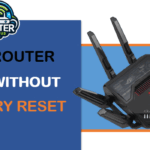Introduction The Verizon Router 2010 is a great home networking device regarded as one of the devices that brought about the revolution of broadband internet services. This router came to market more than a decade ago, it was instrumental in providing fast broadband connection to millions of homes and small businesses across the region. Here, we will discuss about … [Read more...] about Verizon Router 2010: A Comprehensive Guide
Which ASUS Router Support WireGuard? A Comprehensive Guide
Introduction The WireGuard protocol, which utilizes a fast, easy to use, secure VPN technology, has quickly become very popular as one of the founding members at both the Cloudflare initiative and is a trend catching on with many individuals globally. As more users seek to implement WireGuard in their home and business networks, a common question arises: How good are ASUS … [Read more...] about Which ASUS Router Support WireGuard? A Comprehensive Guide
ASUS Router Login Without factory Reset
Introduction To manage your home network, change settings, and so on, this job is absolutely an important one. Though many users will forget their login credentials and won’t be able to access the admin panel of their router. By the way the good news is that you will most likely be able to reboot your ASUS router without having to factory reset it. In this ultimate guide, … [Read more...] about ASUS Router Login Without factory Reset
Verizon Fios D2C-CTV DS Router: The Ultimate Guide
Introduction In today’s world connected to internet, getting a worthwhile and high functioning router is vital to having aidlessly streaming some entertainment. Verizon Fios D2C-CTV DS Router is an avant-garde apparatus that addresses the needs of contemporary households and even firms. In this comprehensive guide, we’ll go over this router’s features, benefits and a step by … [Read more...] about Verizon Fios D2C-CTV DS Router: The Ultimate Guide
Computer Systems Technology
Introduction Computers are very important entities in modern society. Starting from personal computers to large servers, every field has changed in the way it functions, communicates and even entertains. Computer systems technology is the focus of this article with information regarding the functioning of computers, types of system, hardware and software, … [Read more...] about Computer Systems Technology





